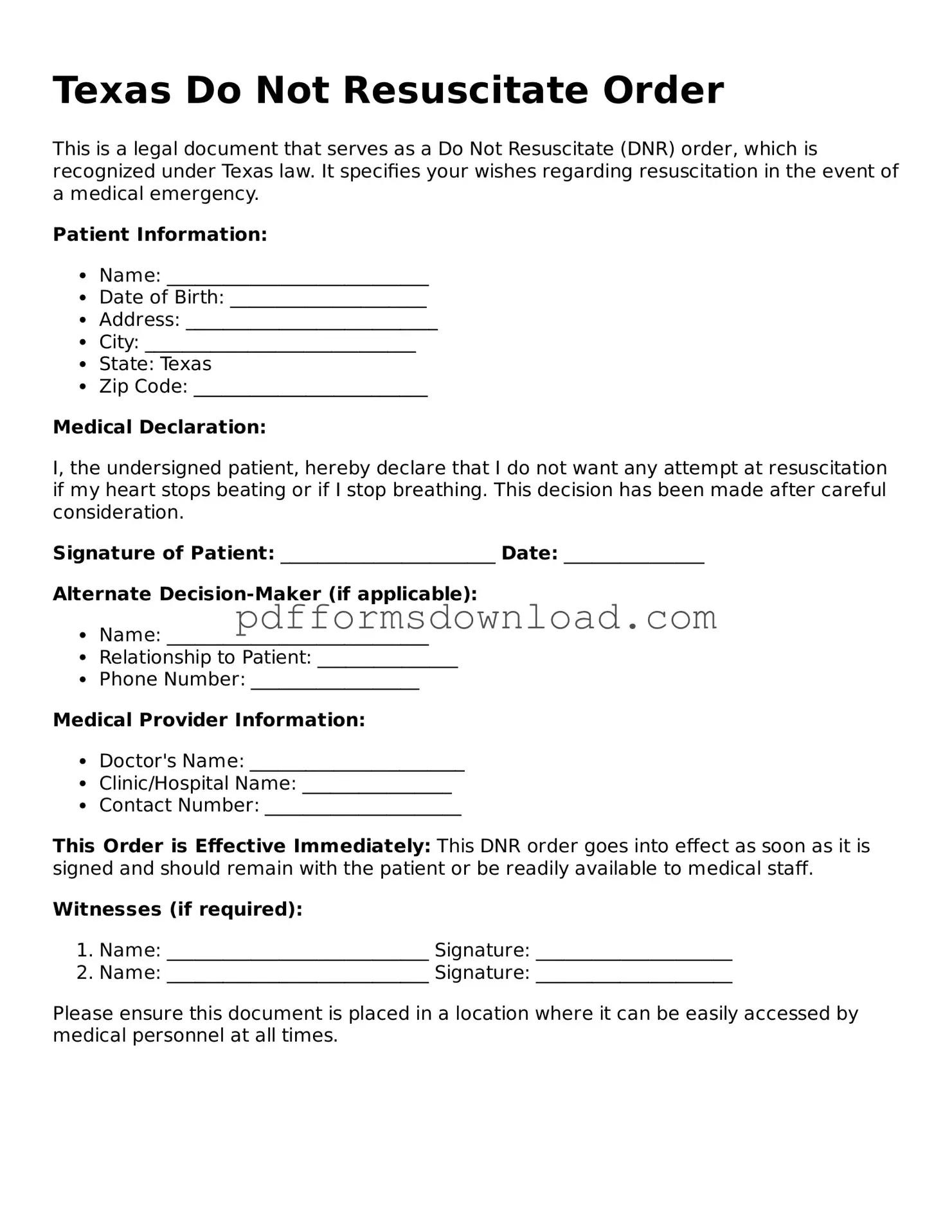What is a Texas Do Not Resuscitate Order (DNR) form?
A Texas Do Not Resuscitate Order (DNR) form is a legal document that allows a person to refuse resuscitation efforts in the event of a medical emergency. This order is particularly relevant for individuals with terminal illnesses or those who wish to avoid aggressive medical interventions at the end of life. The form must be signed by a physician and is intended to communicate the patient's wishes regarding resuscitation to medical personnel.
Who can complete a DNR form in Texas?
In Texas, any adult who is mentally competent can complete a DNR form. Additionally, a parent or legal guardian can sign on behalf of a minor. If an individual is unable to make decisions for themselves, a legally authorized representative may also complete the form. It is important that the individual’s wishes are clearly expressed and documented.
How does one obtain a DNR form in Texas?
A DNR form can be obtained from various sources, including healthcare providers, hospitals, and online resources. The Texas Department of State Health Services provides a downloadable version of the form on its website. It is advisable to consult with a healthcare professional to ensure the form is completed correctly and reflects the individual's wishes.
What information is required on the DNR form?
The DNR form requires specific information, including the patient's name, date of birth, and a statement of the patient's wishes regarding resuscitation. The form must also include the signature of a physician and the date it was signed. Additionally, the patient or their representative must sign the form to validate their consent.
Can a DNR order be revoked?
Yes, a DNR order can be revoked at any time by the patient or their legal representative. To revoke the order, the individual should destroy the original DNR form and inform their healthcare providers of the decision. It is essential to ensure that all relevant parties, including family members and medical personnel, are aware of the revocation to avoid any confusion during a medical emergency.
Where should the DNR form be kept?
The DNR form should be kept in a location that is easily accessible to both the patient and medical personnel. Many individuals choose to keep a copy in their medical records, with their primary care physician, or in a visible place at home. It is also advisable to carry a copy of the DNR form in a wallet or purse, as this can help ensure that emergency responders are aware of the patient's wishes in critical situations.
